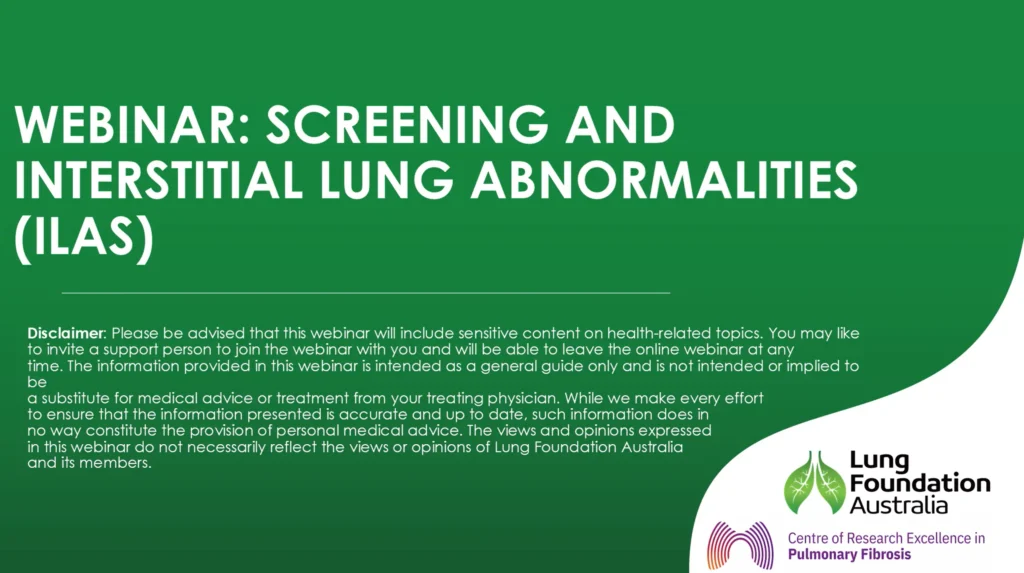Lung Foundation Australia, in collaboration with the Centre of Research Excellence in Pulmonary Fibrosis, hosted the Screening and Interstitial Lung Abnormalities (ILAs) webinar, presented by Dr John Mackintosh, Respiratory and Lung Transplant Physician at the Prince Charles Hospital, Brisbane.
This webinar provides an insight into ILAs, which are often found during an investigation or scan of the chest or lungs. The webinar provides information to help support you through a finding of an ILA, including what these early signs may mean and how best to monitor ILAs over time.
ILAs are subtle radiological findings on chest CT scans, such as ground-glass opacities, reticulation, or honeycombing, that may suggest early interstitial lung disease (ILD) or pulmonary fibrosis. ILAs often appear incidentally and typically lack symptoms or lung function abnormalities. Differentiating ILAs from ILDs involves assessing symptoms, lung physiology, and imaging progression. ILDs often present with breathlessness, persistent cough, and declining lung function, whereas ILAs remain stable or are explained by other conditions. Importantly, lung biopsies are not required for diagnosis. With growing clinical interest, understanding ILAs is vital for early detection, monitoring, and preventing progression to fibrotic lung disease.
ILAs are often detected during lung cancer screening but may also appear in individuals with autoimmune diseases like rheumatoid arthritis, scleroderma, or Sjögren’s syndrome. These groups show a higher prevalence of ILD, even without symptoms or abnormal lung function. Minor interstitial changes found on CT scans may progress, requiring ongoing monitoring. Early detection and tailored follow-up are essential for managing potential lung disease progression.
In summary, ILAs are common. Approximately five to 10% of people over the age of 50 will have an ILA on a CT scan. You’re not alone if your CT reports an ILA. Most ILAs don’t progress to a disease but do need to be monitored. Importantly, some ILAs do represent early ILD like idiopathic pulmonary fibrosis and do give us an opportunity to potentially start treatment earlier than otherwise would be possible if we waited for the development of symptoms.
In partnership with

Was this page helpful?
Good job! Please give your positive feedback
How could we improve this post? Please Help us.
